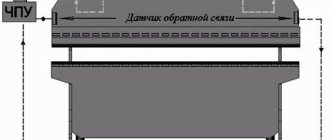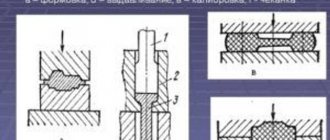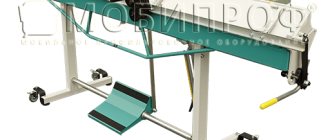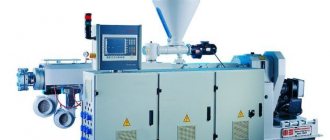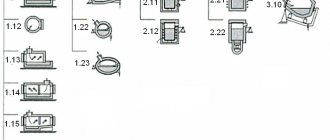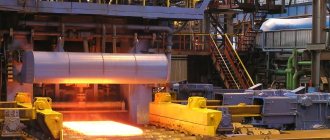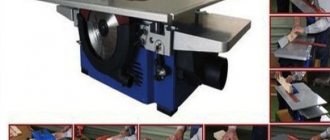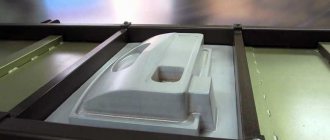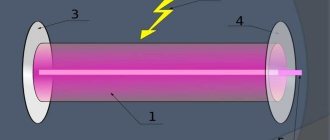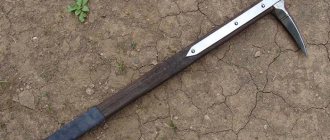Advantages of membrane vacuum presses
They are the most versatile among all of the above. They can perform the following types of work:
- shaped gluing of wood materials
- flat bonding of solid wood and wood boards
- for MDF facades: cladding of figured and flat surfaces with various coatings, such as veneer, PVC, glass, leather, fabric, HPL, ABS
- changing the shape of thermoplastic materials such as acrylic, PVC, etc.
- changing the shape of mineral materials such as Corian, Avonite, etc.
Structural elements of a press for MDF facades
Thermal module
To heat the surfaces being processed, a quartz-halogen type heater is widely used, the advantages of which are efficiency and rapid heating. Other versions of membrane presses use infrared lamps for this purpose or blow the workpieces with air preheated by heating elements to ensure uniform heating of the membrane surface. Some machines provide for the installation of additional heat-generating elements that will provide heating to the surface of the working table.
Automatic control
Equipping a vacuum press with an automation system can significantly increase productivity and improve quality. Automatic lining with polyvinyl chloride film is widely used in enterprises with in-line or continuous production organizations. The worker is required to lay the workpieces in a certain way in the work area, and then trim off the excess film. However, for a small enterprise, using an automatic membrane-vacuum press does not make sense, since they often have to change the types of films and blanks used. In this case, conventional presses are more convenient, allowing manual processing of facades.
Membrane type
Currently, vacuum presses are equipped mainly with silicone membranes, but sometimes there are rubber or rubber models. Silicone has high heat resistance and remains elastic for a long time, which is why today it is used by many manufacturers of vacuum presses. Such equipment performs lining of workpieces with curved surfaces, glues various materials, and also economically uses PVC film in cases where it is necessary to process a small number of parts. Some models of presses provide for convenient fastening of a silicone membrane to the frame. In the vast majority of cases, the silicone membrane serves as an indispensable part of the structure, and the technological process does not involve the use of other materials.
Vacuum pump
To ensure maximum efficiency, the press design uses oil-type pumps, which have proven themselves in devices with large tables. If the surface size is small, then manufacturers can use oil-free pumps, subject to limited processing time of the parts. As a rule, the productivity of such equipment is not particularly high. In budget versions of vacuum presses, VVN liquid ring pumps are used. The most impressive machines in terms of table size are additionally equipped with a receiver. Some models use evacuation simultaneously with counter pressure injection, for which a powerful compressor is included in the equipment set.
Dividing frame
If it is necessary to simultaneously use two types of film for the manufacture of parts, there is a need to divide the workbench. For this purpose, a special dividing frame is used. The same device allows you to process workpieces in small batches in order to economically use PVC film.
Additional work table
Some models provide the ability to increase productivity with an additional desktop. As a rule, such equipment is in demand at large furniture enterprises, where it allows one to increase the output of finished products by more than one and a half times.
Device for bent MDF facades
Not all membrane-vacuum presses provide the possibility of molding and cladding radius or curved facades. This option is provided by introducing additional components into the design.
Unwinding devices
When operating a vacuum press at a large enterprise, an unwinding device can significantly increase the productivity of the equipment. Film cutting is performed manually or automatically in different models.
Antistatic brushes
An important factor in high-quality cladding is the absence of static electrical charges on the film. Special brushes remove charges from the material and thereby make it easier to clean the film from adhering debris before feeding it to the press.
Support system
To reliably lay facades, some manufacturers use special supports - magnetic and others. This option is not available on all models and helps improve the quality of processing.
Membrane-vacuum pressing technology
The technology of membrane-vacuum pressing makes it possible to cover various surfaces with decorative film, including those with a fairly deep relief. The complexity of the production process requires manufacturers to pay special attention to both individual technological nuances and the materials used in production.
The scope of application of membrane-vacuum pressing is very wide: these include volumetric furniture facades made of MDF, door panels, rounded tabletops, and various decorative furniture elements. The cladding of all these objects is carried out using a vacuum press (with or without a membrane). As a rule, PVC films with a thickness of 0.3-0.5 mm (less often 0.25 mm), plain, with a printed pattern and texture are used in production.
In order to avoid problems during production and minimize the amount of defects, strict adherence to technology and quality control at every stage is necessary.
Requirements for the room for applying glue and drying parts The room for applying glue must be equipped with an exhaust chamber with a hydraulic curtain or a dry filter. The chamber must be kept completely clean, its walls and work table must be cleaned daily. In addition, it is necessary to install exhaust ventilation and isolate the room from grinding and other things. The floors should be wet cleaned every two hours and the equipment should be completely cleaned of dust every week. It is advisable to create excess pressure in the room in order to prevent dust from entering from adjacent rooms.
Stage 1. Preparing parts
Before cladding, parts should be prepared for application of glue as follows: › Carry out acclication in the workshop for at least three days. › Clean parts from dust, grease and oil. › Check the moisture content of the materials being glued – it must meet the technical requirements. › Sand the surface of the face, edge and milled pattern using sandpaper No. 280-320.
Stage 2. Preparation of glue
To glue PVC film to the surface, two- or one-component adhesive can be used. If a one-component adhesive is supplied completely ready for use, then before using a two-component composition it must be prepared: mixed with a hardener, placing the required amount of glue and hardener in a clean container. The mixture is thoroughly mixed, if possible mechanically using a stirrer. Before application, the glue is passed through a 300 micron filter to avoid further clogging of the gun nozzle when applying the glue. The most favorable application temperature is 18-23°C.
Stage 3. Setting up the gun The glue is applied to the parts using pneumatic spraying using special guns for glue materials. The choice of nozzle diameter depends on the type of glue: for adhesives of standard viscosity (600–1,300 mPa*s) the nozzle diameter should be 1.4–1.6 mm, for compositions of increased viscosity (2,000–3,000 mPa*s) – 1, 8-2.0 mm. The air pipeline must be equipped with an oil and moisture separator, as well as a pressure regulator. When setting up the gun, the following rules must be observed: › the contour of the torch must be smooth, without gaps; › the ratio of glue and air consumption must be selected in such a way as to prevent unnecessary fogging. The air pressure on the gun should not exceed 2.5-3.0 atm.
Stage 4. Applying glue
The glue can be applied to one part or to several parts in a stack. Work begins from the edge of the element - the narrowest torch is installed and glue is applied along the part. It is necessary to move the gun evenly so that the composition is applied without skips or drips; the gun must be positioned parallel to the edge of the part. The distance from the surface of the part to the gun should be 200-250 mm. This way the glue is applied to all edges. Due to the fact that the edges of the parts and the milled pattern are highly absorbent, double application of glue is necessary for good adhesive strength. For adhesives of standard viscosity, a second application of the adhesive is possible using the “wet on wet” method, and for adhesives with increased viscosity - with intermediate drying of 5-10 minutes. Then the glue is applied to the milled pattern with sequential passage of all the lines of the pattern. Double application is also recommended here. Typically the glue consumption is 100 g/m2. After this, the glue is applied to the surface of the part - the torch is made as wide as possible, the glue consumption is 50 g/m2. The gun should be cleaned as often as possible, especially after long periods of non-use.
Stage 5. Drying parts
Parts with glue applied are placed on special racks. The minimum drying time is 30 minutes. If the film is glossy, then drying the parts takes at least 1.5-2 hours.
Stage 6. Sanding the adhesive layer When using glossy films, before lining parts in a membrane-vacuum press, the adhesive layer must be polished with sandpaper No. 320. If the film is matte (corrugated, wood-like), sanding is not necessary.
Stage 7. Selection of pressing modes
The technical description for each adhesive for membrane-vacuum pressing indicates the activation temperature at which the adhesive begins to “cross-link” the materials being bonded. Pressing modes (film heating temperature, film heating time, pressing time, etc.) must be selected in such a way as to achieve this temperature in the adhesive layer on the edge of the part. For each film, the pressing modes are different; they are selected individually and for this purpose “idle” pressing is performed. Often, the manufacturer of PVC film indicates the most optimal temperature conditions for each specific film. The full pressing cycle is usually 3-5 minutes.
If all these nuances are observed, the likelihood of a defect will be significantly reduced. If this does happen, it is necessary to make changes to the technological processes in order to prevent the occurrence of defects in the future.
Causes of the most common problems when lining parts with thermoplastic films
- Shagreen (orange peel effect)
Possible reasons › Incorrect gun setting: high pressure (5-6 atm), unbalanced air-glue ratio. This leads to the fact that the glue falls on the part in large drops. › Excessive application of glue to the surface of the facade. It should be remembered that the main layer of glue must be applied to the milling areas and the ends of the part. The remaining surface of the MDF facade is only lightly sprayed with quick movements of the gun. › Quality MDF surface treatment. The rise of the pile of the slab after applying the glue is due to the poor quality of the panel: dull tools used in its processing, insufficient grinding of the facade blank. These defects should be removed using an emery sponge, but not by sanding, but by knocking down the inclusions with light movements. › Dirt in the workshop, garbage under PVC film. PVC films have the ability to form static electricity on the surface, therefore they attract almost all debris at a distance of up to 30 cm from the film, as well as dust flying in the air, including from glue, if the booth for applying glue is located nearby and is not equipped appropriate hoods and barriers. › Presence of debris on the MDF facade blanks themselves. This is usually a consequence of carelessness of workers or insufficient cleanliness of the room, including the ceiling. Garbage under PVC film in a roll. It happens that manufacturers of cheap film skimp on equipment to control the quality and purity of their products.
- Peeling off PVC film at the ends of the finished product
Possible causes › Incomplete curing of the adhesive, which occurs due to the fact that the required activation temperature in the adhesive layer has not been reached. › Peeling of the film can occur both immediately after pressing and during use of the finished product.
- Film creases
Possible causes › Uneven heating of the film. › Violation of the layout of parts on the table (failure to maintain the distance between parts in length and width). › Incorrect selection of gasket thickness.
- Whiteness on film
Possible reasons › Insufficient heating of the film.
- Blistering film
Possible causes › Insufficient drying of parts after applying glue. › Uneven film advance after vacuuming.
Buy a membrane vacuum press in St. Petersburg
offers presses from the Austrian company Columbus-Tech and the German company JOOS. These brands are leaders in the European market in terms of the quality of their products.
To purchase, the client must indicate what materials he will work with, what the maximum dimensions of his products will be and in what quantities he will produce his products.
To get more detailed information, you can contact us in any convenient way:
- By calling +7 952 389-69-78
- By writing by e-mail
- Via feedback form
- By visiting our office: St. Petersburg, st. Verbnaya, 1B or Moscow, st. Smirnovskaya, 25
Vacuum presses
Membrane vacuum cold press for door production
Furniture production technologies – vacuum press and membrane press for cladding furniture facades The concept of “fashion” also exists in furniture production. This is evidenced by the popularity of cabinet furniture with radius facades. Compact and original, it is in extraordinary demand among buyers. There are various types of equipment that are used for cladding doors and furniture facades. The most widely used are the vacuum cold press and the membrane press. The units are distinguished by their simplicity of configuration and functionality. It’s easy to open a division within an enterprise or an independent business for cladding the facades of cabinet furniture. Membrane vacuum presses are affordable, and many companies produce them. Models on the market vary in size, power and control methods. Vacuum press - new opportunities What will the acquisition of such equipment give a company? A vacuum press for facades will allow you to produce bent cladding for furniture of any degree of complexity. The unit allows you to significantly expand the range of products. The vacuum press for facades can be configured to produce products with cladding of varying degrees of complexity and different designs. Radius facades are made from reliable and inexpensive MDF material. The vacuum press for facades is excellent for working with different types of surfaces, which allows you to avoid damage at the cladding stage. Vacuum cold press makes it possible to produce furniture facades with minimal production costs. The unit uses atmospheric pressure during operation, which is sufficient for pressing most products. To produce standard and individual curved facades, it is enough to purchase a vacuum press for facades. Membrane vacuum press – cladding of relief surfaces of any complexity When cladding products with complex profiles, it is better to use a membrane press. Pressing occurs using an elastic membrane. The advantage of units of this type is that they are capable of working with products up to half a meter thick. The membrane press is designed for applying natural materials, plastic, and decorative coatings to relief parts of furniture. A membrane vacuum press combines the advantages of the units presented above. The equipment is characterized by extreme functionality. The transparent canvas makes it possible to finely regulate and fine-tune the operation of the press, and therefore avoid the appearance of defects. The membrane vacuum press shows excellent performance in cold pressing. You can buy a press either as standard or with additional options. Membrane vacuum pressing is one of the most reliable and profitable methods of cladding furniture facades. Its use in furniture production will allow the company to develop and find new markets for its products. ← Return to contents
